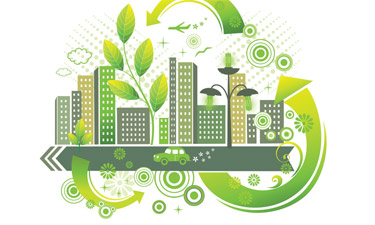 Cities, counties, regions, and states are increasingly looking at the functions of their “green infrastructure” and the benefits it provides to citizens and taxpayers. Once taken for granted, the interconnected web of forests, streams, rivers, wetlands, and other natural systems that is woven into every community is suddenly being recognized as extremely important to economic and environmental health.
Cities, counties, regions, and states are increasingly looking at the functions of their “green infrastructure” and the benefits it provides to citizens and taxpayers. Once taken for granted, the interconnected web of forests, streams, rivers, wetlands, and other natural systems that is woven into every community is suddenly being recognized as extremely important to economic and environmental health.
Mayors, county executives, and other elected officials are beginning to realize the importance of green infrastructure and how it supports and complements sustainable development. However, only a small number of these officials yet understand that their parks and public green spaces are essential components of sustainable development. Parks leaders have an extraordinary opportunity to show these elected officials and the public how our parks are the backbone of green infrastructure and are critical to the economic and environmental health of every community.
A key concept in understanding the importance and value of green infrastructure is the notion of resiliency. Resiliency is a measure of how well natural systems function over a wide variety of conditions and challenges. Understanding resiliency is especially important in the context of economic and human terms. How well cities, counties, and regions are able to withstand the increasing costs and impacts of climate change conditions is dependent on how resilient the natural systems are. Communities must plan to deal with the impacts of climate change--sea-level rise, more frequent extreme weather events, and the increasing costs of repairing traditional infrastructure—buildings, roads, utilities—damaged in storm events. The U.S. Environmental Protection Agency has estimated that the price tag just for upgrading stormwater management systems around the country is a staggering $390 billion.
In many communities, the question of how resilient the natural systems are is tied directly to how much parkland they have and how interconnected their park system is to other protective systems, both natural and engineered. These natural and constructed protective systems include levees, natural floodplains, man-made and natural wetlands, ground water recharge areas, urban forests that clean and purify air, and other bio-retention areas and structures that absorb pollutants, slow the flow of stormwater, and filter impurities in air and water. In many communities large areas of protected open space have been purchased over decades to perform these functions. Often, the park system was specifically designed to connect natural systems such as stream valleys, river corridors, and other natural ecosystems to each other. The benefits have been taken for granted and the costs have not been associated with benefits--but not for much longer.
Well-designed park systems that are integrated into developed infrastructure can enhance nearly all of the infrastructure functions, often at a fraction of the cost of man-made systems. A number of larger cities, notably New York City, Philadelphia, and Houston, are making massive investments in changing their “gray infrastructure,” that is, the man-made structures designed to handle and treat wastewater and stormwater, enable commerce, and support utility systems. Traditional gray infrastructure has not always performed up to expectations; however, and damages caused by intense weather events have become hugely expensive to repair. This is one of the reasons these cities and others like them are looking more closely at tapping into functioning natural systems and utilizing their benefits, often at greatly reduced costs from traditional infrastructure. Philadelphia, for example, is looking to convert fully one-third of its cityscape into permeable surfaces to better deal with runoff, erosion, water quality degradation, and stormwater. What better and less expensive method is there than to utilize park and public landscapes to perform such functions?
Quantifying and measuring these benefits is a challenge. Which kinds of natural landscapes produce the greatest benefits is a key question for cities and regions, and there are tens of millions of dollars at stake in deciding what type of system approaches to use. Low impact development (LID) is an emerging school of practice for cities and regions that are trying to utilize the benefits of green infrastructure in creating sustainable communities. New concepts such as green streets and other low impact development strategies are beginning to define new types of neighborhoods that are much more desirable because they are being developed according to design principles including shade trees, bio-swales, bio-remediation, and other conservation practices involving green space and natural systems.
The implementation of conservation practices and expansion of the use of parks in green infrastructure design exemplifies the concept of the “triple bottom line,” that is, they simultaneously produce economic, environmental, and social benefits. The sustainability and resiliency benefits provided by parks are becoming much more quantifiable and measurable. Moreover, implementation of these conservation strategies leads to green jobs, higher tax bases, and greater livability, thus making communities more attractive to businesses and residents. Parkways, byways, bike/ped trails, and greenways offer not just vegetative buffers to development and stormwater protection, but also create alternative transportation systems and opportunities for new economic development.
Green infrastructure is a concept that is gaining currency in communities across America. It is our time to demonstrate that parks are central to the economic, environmental, and social benefits that green infrastructure brings.
Richard J. Dolesh is NRPA Vice President of Conservation and Parks.

